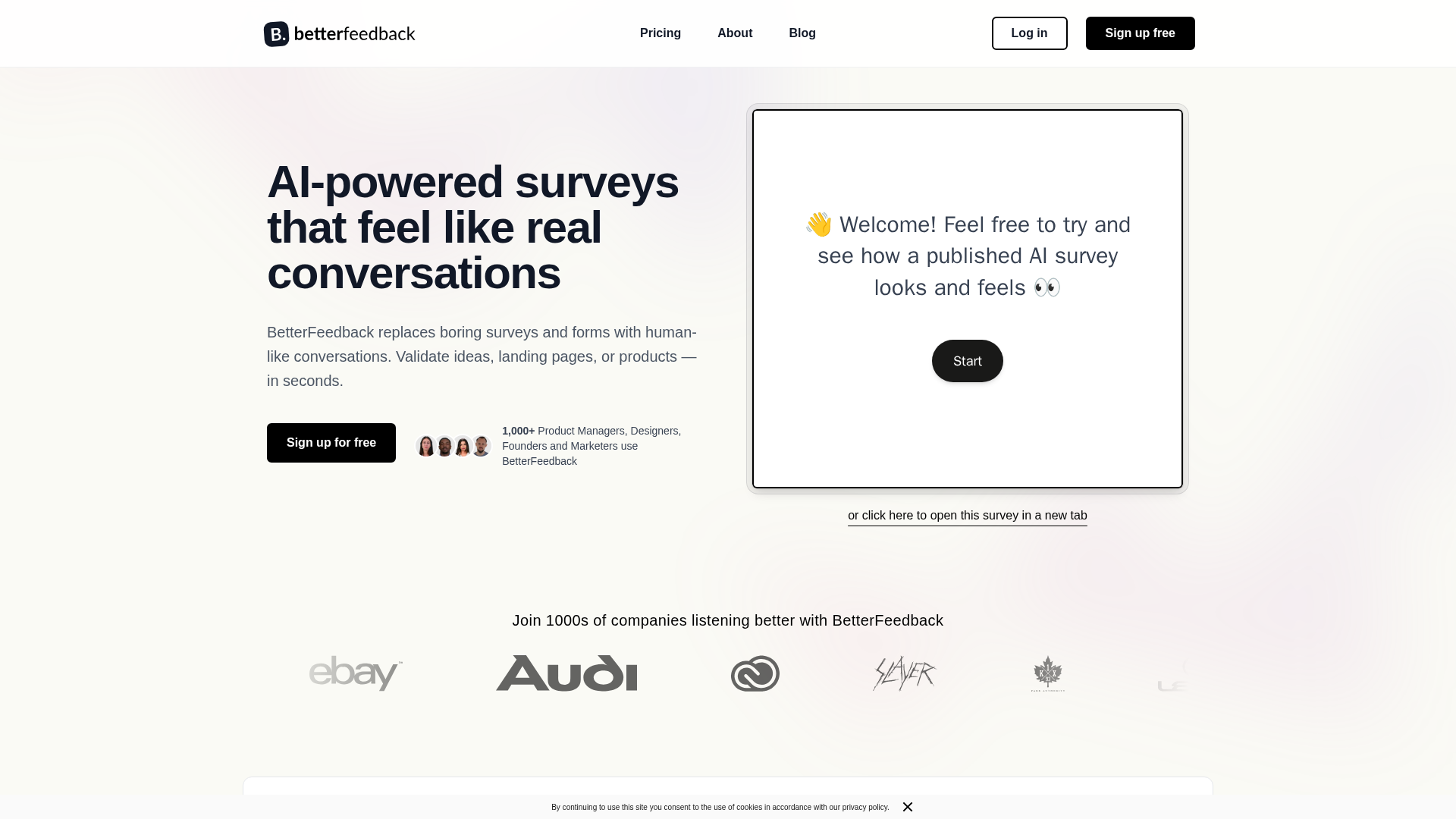BetterFeedback
| Introduction: | BetterFeedback replaces boring surveys and forms with human-like conversations, allowing users to validate ideas, landing pages, or products in seconds. |
| Recorded in: | 6/5/2025 |
| Links: |

What is BetterFeedback?
BetterFeedback is an AI-powered platform that transforms traditional, boring surveys and forms into engaging, human-like conversations. It utilizes AI agents that chat naturally with users, asking smart, adaptive questions to gather high-quality feedback. Designed for Product Managers, Designers, Founders, and Marketers, BetterFeedback aims to provide 10x higher response quality and 3x higher completion rates, turning raw feedback into actionable insights rapidly. It enables users to validate ideas, landing pages, or products efficiently by facilitating dynamic, intelligent conversations rather than static forms.
How to use BetterFeedback
Users can get started with BetterFeedback by signing up for a free plan, with no credit card required, and setting up their first conversational survey in seconds. The process involves three simple steps: first, create a survey by defining its goal, providing context, or choosing from ready-made templates, with AI assisting in question suggestions. Second, share the survey via a simple link, messaging apps, or embed it directly on a website or application. Third, watch responses roll in, with real-time tracking and AI automatically analyzing feedback to provide actionable data. Users can respond naturally via their preferred method, either voice or chat.
BetterFeedback's core features
AI-powered conversational surveys
Human-like AI agents for natural interaction
Multilingual support for 30+ languages
Dynamic questioning and adaptive follow-ups
Instant AI-analyzed summaries and sentiment analysis
Voice or chat response options for users
Goal-based survey creation with AI suggestions
Ready-to-use survey templates
Easy sharing via link or embeddable widgets
Real-time response tracking and actionable insights dashboard
Use cases of BetterFeedback
Usability testing
Concept testing
Website feedback
Prototype testing
Continuous discovery
Brand sentiment analysis
Foundational research
Churn interviews